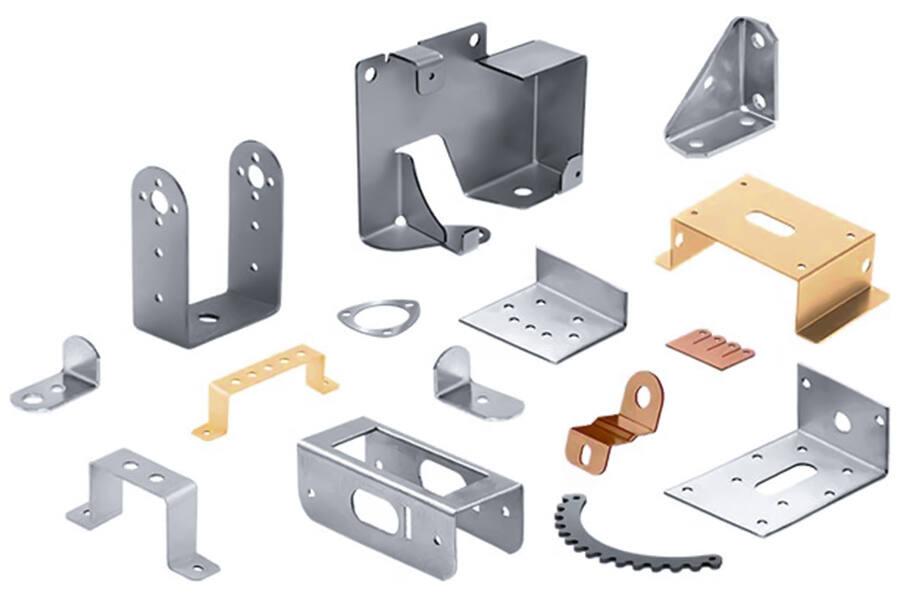In the field of industrial manufacturing,metal bending is one of the common processes. Whether it is automobile manufacturing, machinery manufacturing, home appliances, construction and other industries, the bending process of metal sheets is inseparable. So, what exactly is metal bending in industry? By reading this article, all your questions will be answered. Next, let us walk into the ocean of knowledge about metal bending!
What is metal bending?
Metal bending is the use of force to deform metal into different geometric shapes. Bending a thin sheet of metal one or more times to form the final geometry is called metal bending. The thickness of the metal used may vary. The minimum thickness that can be bent is approximately 127mm, the maximum thickness depends on the material type and thickness. Typically, the thickness of the steel plate does not exceed 6 mm. Generally, the bend radius should be equal to or greater than the material thickness.
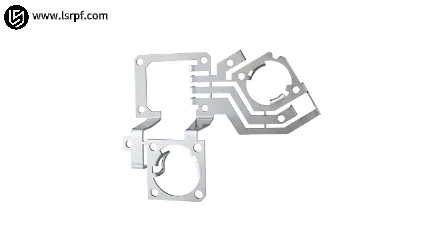
What Are the Key Methods of Metal Bending?
Metal bending is a process ofbending metal materialsinto specific shapes. The main methods include the following:
1.V-Bending:
This method is very common and is utilized for mostbending needs. The method uses a “punch” and “V-die” to bend the sheet metal to specified angles. In this process the punch applies force on the sheet metal at the location over the V-die. As a result of the force from the punch an angle is formed in the sheet metal. The V-bending method is relatively efficient because it can be utilized for bending steel plates without having to change their position.
There are three commontypes of V-bending:
※Coining
Coining is a bending process in which the punch and the work piece bottom on the die. This produces a controlled angle, which leads to little spring back. There is more tonnage required on this type of bending than in air bending and bottom bending.
The advantages of coining are that, in order to produce outstanding results, accuracy is essential and that is precisely what the coining method can provide. Along with being accurate, repeating the results is also an easy task when it comes to using this technique. Spring back is also less common when using coining, meaning that the metal is less likely to return to its original state.
※Bottom Bending
Bottom bendingalso uses a punch and V-shaped bottom die, just like air bending. What’s different is that the punch is used to push the metal fully into the die to create a bend. Bottom bending (or bottoming as it’s otherwise known) gets its name because the metal is forced to the bottom of the die. Higher pressures are used, and the metal comes into full contact with the punch and the die.
Because the material is pressed into the bottom of the die, the die that is used will determine the bend angle that’s achieved. With bottom bending, you have to change the die to achieve a different bend angle. This isn’t the case with air bending because the punch can just be pushed to a different depth in the die. Bottom bending results in less springback and creates more accurate angles. The big disadvantage is that each new bend radius requires a different bottom die, which means swapping it manually on the machine. The machinery is also put under more pressure during production.
※Air Bending
Partial bending, or air bending, derives its name from the fact that the working piece does not actually touch the tooling parts entirely. In partial bending, the workpiece rests on 2 points and the punch pushes the bend. Is still usually done with a press brake but there is no actual need for a sided die. Air bending gives much flexibility. Let’s say you have a 90° die and punch. With this method, you can get a result anywhere between 90 and 180 degrees. Though less accurate than bottoming or coining, this kind of simplicity is the beauty of the method. In case the load is released and the material’s springback results in a wrong angle, it is simple to adjust by just applying some more pressure. Of course, this is a result of lessened accuracy compared to bottoming. At the same time, partial bending’s big advantage is that no retooling is necessary for different angle bends.
2. Roll Bending
Thismetal bending techniqueinvolves bending the sheets into curved forms. This technique makes use of roll bending sheet metal criteria, that involve the use of three rollers, a hydraulic pressing system along with a brake. The distance between the three rollers allows the manufacturer to bend the sheets in curves.
3. U-bending
U-bending is exactly similar to the V-bending method. This method makes use of a U-shaped punch along with a U-shaped die. The only difference between V- bending and U-bending is that the resulting sheet is in a U shape instead of a V shape.
4. Rotary bending
The rotary bending method is deployed wherever a bending of greater than a 90-degree angle is required. It can also be considered similar to that of V-bending, but the output in this process is more uniform and aesthetic as the metal sheet bending machine used in this method doesn’t scratch the surface of the sheet.
5. Edge bending
This technique of edge bending sheet metal helps the manufacturer to bend the edges without damaging them. The sheet metal edge bending method is most commonly utilized in those sections of sheet metals that are shorter than the remaining metal part. It helps eliminate the sharpness of the corners and increases the aesthetic appearance of the outcome.
6. Wipe bending
This bending method makes use of a wipe die. The sheet of metal is carefully placed inside the wipe die, and a pressure pad applies pressure on the sheet. Later on, the punch is used to make the desired bend in the sheet.
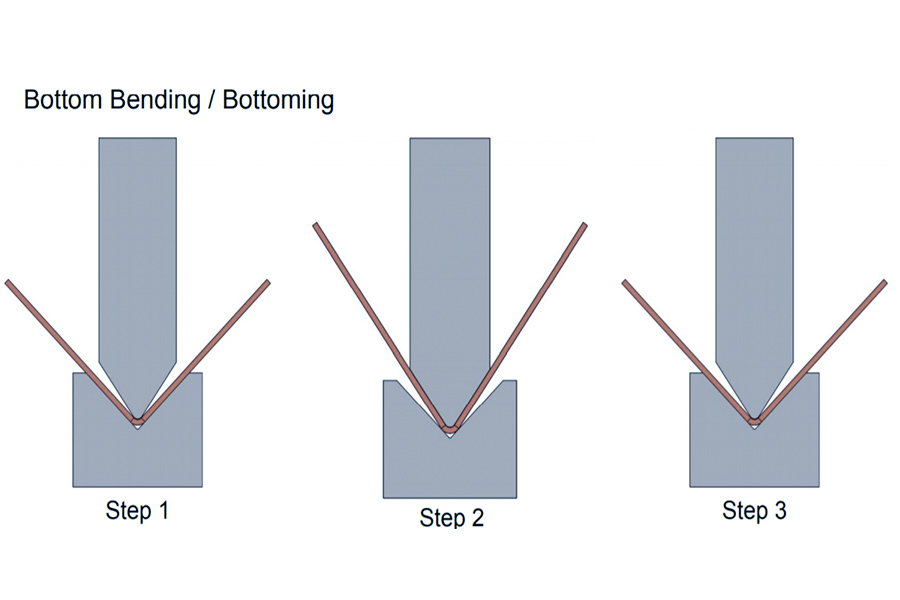
What Are the Differences Between Air Bending and Bottom Bending?
Air bending and bottom bending are both carried out using the same equipment: a die and punch. The difference between these two bending methods is down to the technique that’s used when a bend is created. Bottom bending is when the part is pressed full down to the bottom of a die (hence “bottom bending”) to form an angle. Air bending is when the part is pressed partially downward against a die to create a given angle. The part still has clearance between itself and the bottom of the die (“air bending” for the visible air between the two).
Bottom bending can be used to create accurate, neat bends in metal parts that need a greater deal of precision. Air bending is slightly less accurate, but it’s faster and much more convenient in the production process. Both bending processes can be performed using a manual or CNC controlled press brake. In general, more accurate press brakes will be needed for air bending. When it comes to bottom bending, however, accuracy in the press is less important, but more scrap may be generated. More equipment maintenance may also be needed for bottom bending as well due to the pressure exerted against the die and the impact on the hydraulics of the press brake.
| Options | Air Bending | Bottom Bending |
| Custom Tooling | Not required | May be required |
| The / Radii | Single die can accommodate multiple angle radii | Unique die is required for each angle radius |
| Angle Accuracy | >± 45′ | ±15-30′ |
| Best Used For | Parts where bend accuracy isn’t vital | Parts where bend accuracy is important |
| Pricing | No tooling investment / higher part price | Tooling investment / lower part price |
What Equipment Are Used in Metal Bending?
If you want to achieve precise and outstanding results whenbending metal, you have to use specialized tools. Three common must-have tools for bending sheet metal are hydraulic press brakes, manual press brakes, and shears.
1.Metal bending machine or hydraulic CNC bending machine
A hydraulic press brake is a more complexmetal bending tool. The machine is equipped with a hydraulic system and can bend thicker and larger sheets. It also comes with a digital control system that can program different bends and execute them automatically. It is ideal for large manufacturing companies producing large sheet metal parts.
2.Manual folding machine
Metal sheets are usually bent using a manual bending machine. Tools vary in size depending on sheet thickness and are typically used for simple bends. Small machining businesses and workshops often choose it because it is also fairly easy to use and transport.
3.Scissors
Use scissors to cut the metal sheet into pieces. Their functions include cutting metal sheets into precise geometric shapes before bending them; they can be manual or electric.
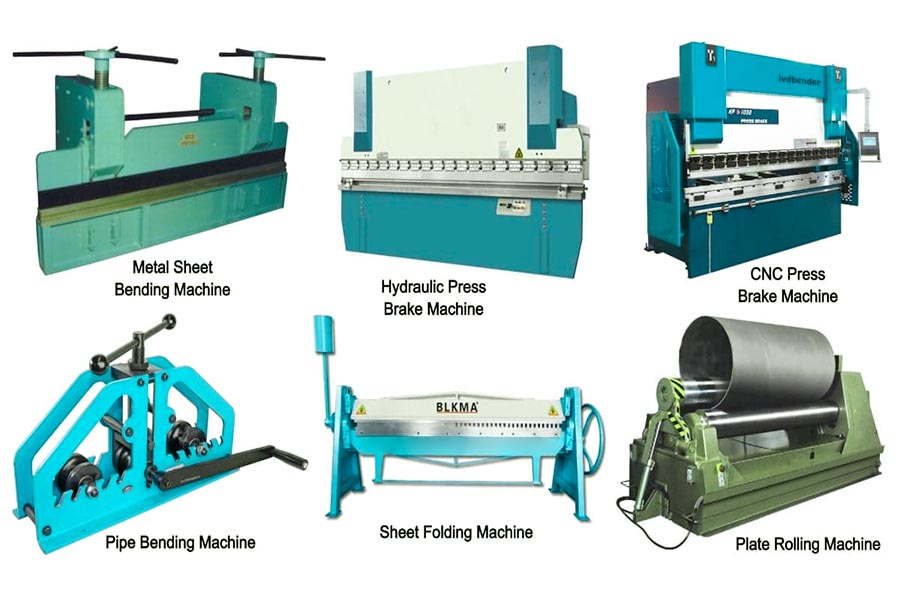
What Materials Are Suitable for Metal Bending?
You cannot bend elastic-plastic materials on a press brake. You may also damage the machine if you try to do this. Special care must be taken when deciding on materials for metal bending during manufacturing. Let’s take a look at some of the best materials recommended for metal forming and bending.
- Carbon Steel:Carbon steel is one of the most flexible and strongest materials used in sheet metal manufacturing. Since the material is recyclable, it also helps reduce the carbon footprint.
- Aluminum:Aluminum is mainly used in lightweight applications. Special care must be taken when bending aluminum to prevent the material from slumping or cracking at the corners.
- Stainless steel:When the final product needs to be strong and durable and the metal strength is high, stainless steel is the first thing that comes to mind. Stainless steel also requires the use of high-power sheet metal bending machines to form products.
- Titanium:Titanium is a corrosion-resistant and strong material, ideal for metal bending technology. If your product is medical or sports equipment, titanium should be your material of choice.
- Copper:Cost is the most corrosion-resistant material, but also the lowest cost. Copper enables high-precision sheet metal bending. Copper is a proven material used extensively by many metal bending industries for a variety of purposes.
These are the best materials for all types of sheet metal bending. Carbon steel is the most commonly used of the above materials. There are many other metals that can be used in the bending process. But be sure to do adequate research before settling on the material.
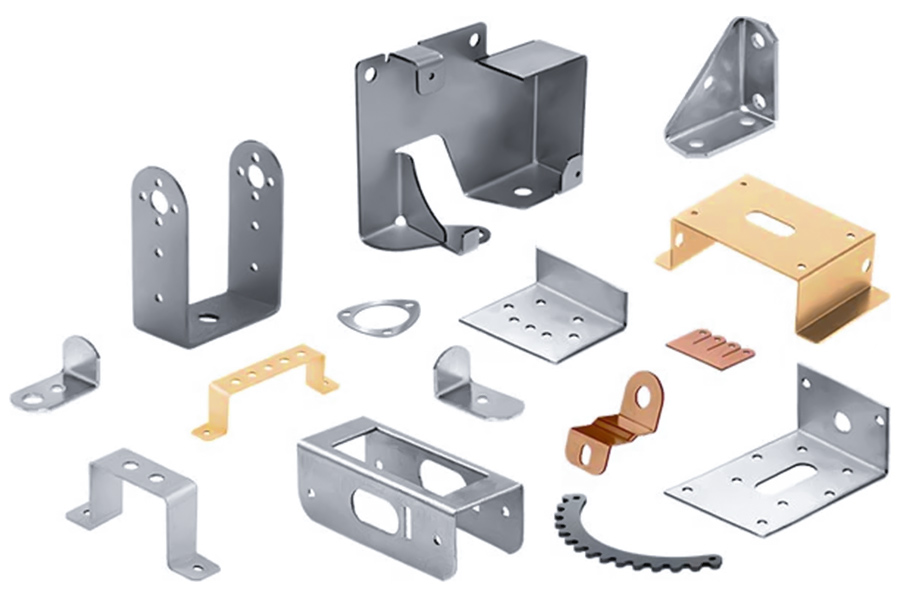
FAQs
1.What is the meaning of metal bending?
Metal bending processing is of great significance in industrial production, mainly because it can bend metal materials into various shapes, such as arcs, angles, circles, etc., to meet different industrial needs. At the same time, it can also precisely control the size of metal materials to make them meet design requirements. Through bending processing, the metal material can form a certain bending radius at the bend, thereby increasing its strength and stiffness. In addition, metal bending processing usually has the advantages of high efficiency, speed, and high precision, which can greatly improve production efficiency and reduce production costs. Finally, metal bending processing can make the surface of metal products smooth, free of burrs, cracks and other defects, thereby improving the quality and reliability of the product. This is especially important for some metal products that require long-term use.
2.What is the metal bending method?
Metal bending processing methods mainly include the following: Manual bending: For thinner and soft metal materials, hand tools such as pliers, hammers, etc. can be used for bending. Mechanical bending: For thicker or harder metal materials, special mechanical equipment is usually required for bending, such as bending machines, plate rolling machines, etc. Thermal bending: Certain metal materials, such as aluminum, copper, etc., have good plasticity and thermal conductivity. In the hot bending process, the metal material is first heated to a certain temperature, and then mechanical force is used to bend it. Rolling bending: Rolling bending is a bending method that exerts large forces on metal materials. By placing a metal material between the rollers of a rolling machine, gradually increasing force is applied, causing the metal material to bend with the movement of the rollers.
3.What martial art is metal bending based on?
Metal bending is not based on some martial arts, but on the mechanical properties and plastic deformation laws of metal materials. When external force acts on a metal material, relative slippage between atomic layers will occur inside the metal, causing plastic deformation of the entire material. This plastic deformation is the premise and basis for bending metal materials.
4.What can metal bending do?
Metal bending has a wide range of applications in the manufacturing industry, including but not limited to the following aspects: Home appliance industry: such as refrigerators, washing machines, air conditioners and other household appliances shell manufacturing, through bending technology can produce beautiful appearance and excellent Structural performance metal casing. Automotive industry: The manufacturing of automobile bodies, doors, hoods and other components is inseparable from bending technology. Through precise bending processing, the accuracy and reliability of automobile parts can be ensured and the overall performance of the automobile can be improved. Mechanical equipment industry: When manufacturing various cabinets, racks, boxes and other structural parts, bending technology needs to be used to complete the bending processing of metal sheets.
Summary
As an important technology in sheet metal processing, metal bending plays an important role in modern manufacturing. Through continuous innovation and development, metal bending technology will inject new impetus into the development of the manufacturing industry and promote the development of the manufacturing industry in a more intelligent, high-precision, green and diversified direction.
Disclaimer
The content on this page is for reference only.LSdoes not make any express or implied representation or warranty as to the accuracy, completeness or validity of the information. No performance parameters, geometric tolerances, specific design features, material quality and type or workmanship should be inferred as to what a third party supplier or manufacturer will deliver through the Longsheng Network. It is the responsibility of the buyerseeking a quote for partsto determine the specific requirements for those parts.Pleasecontact usfor moreinformation.
LS Team
This article was written by multiple LS contributors. LS is a leading resource in the manufacturing sector, withCNC machining,sheet metal fabrication,3D printing,injection molding,metal stamping, and more.


